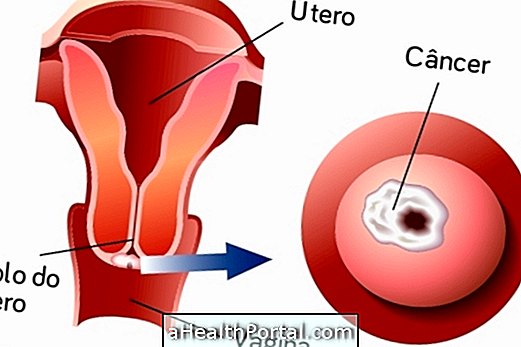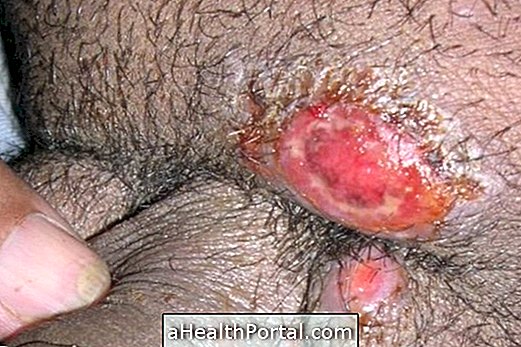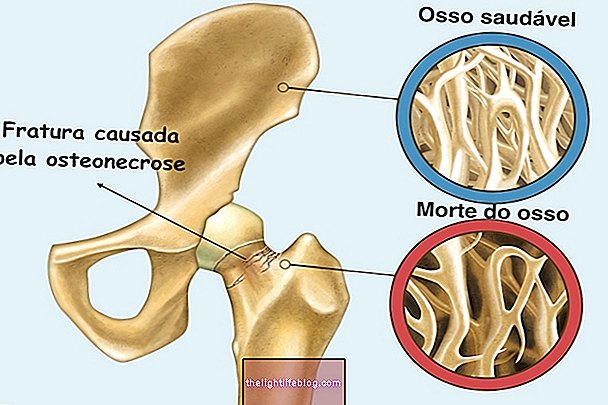The main cause of cervical cancer is the presence of HPV type 6, 11, 16 or 18, a sexually transmitted disease caused by Human Papilloma Virus, as it stimulates the appearance of changes in the DNA of cells, leading to the appearance of cancer.
Cervical cancer, also called cervical cancer, is at higher risk from the age of 20, but it mostly occurs in women between the ages of 40 and 60. Other risk factors that may favor the development of cervical cancer include:
- Early sexual life too early;
- Have multiple sexual partners;
- Do not use a condom during intimate contact;
- Have some STDs, such as genital herpes, chlamydia, or AIDS;
- Have had several deliveries;
- Poor personal hygiene;
- Prolonged use of oral contraceptives for more than 10 years;
- Taking immunosuppressive or corticoid medicines for lupus;
- Exposure to ionizing radiation;
- Have already had a disease called squamous dysplasia of the vulva or vagina;
- Low intake of vitamin A, C, beta carotene and folic acid.
In addition, it is important to remember that adenocarcinoma, endometriosis, family history and smoking and overconsumption of alcoholic beverages also increase the risk of developing cervical cancer.

The human papilloma virus affects a large part of the population and it is estimated that virtually all women are contaminated at some point in life, however the presence of the virus does not indicate that the woman will have cancer because it is possible to eliminate HPV with treatment indicated by the gynecologist, which is made with ointments, creams and cauterization for about 2 years, and manages to completely eliminate the virus.
HPV can have spontaneous remission and in this case it does not present any symptoms, however, in some cases it can cause lesions with great chances of becoming malignant. As the disease progresses, the main symptoms that the cancer has developed are vaginal bleeding, runny nose and pelvic pain.
How to prevent
The main way to prevent cervical cancer is to avoid HPV infection or to identify and treat the disease early on by performing the pap smear. The evolution of HPV is slow and can take between 15 and 20 years until the virus causes cancer, so monitoring with the gynecologist and proper treatment of the disease is effective in preventing complications and preventing cancer. Learn how to treat HPV.
Thus, one should go to the gynecologist to have the pap smear at least once a year, in addition to taking the HPV vaccine. Stopping smoking, always using a condom in intimate relationships and having good intimate hygiene are also measures that help prevent this type of cancer. Having healthy lifestyle habits and exercising regularly also helps protect against cervical cancer.
Types of cervical cancer
Cervical cancer can be classified as:
- Tx: Unidentified primary tumor
- T0: No evidence of primary tumor
- Tis or 0: Carcinoma in situ
Stage 1:
- T1 or I: Cervical carcinoma only in uterus
- T1 a or IA: Invasive carcinoma, diagnosed only by microscopy
- T1 a1 or IA1: Stromal invasion up to 3 mm deep or up to 7 mm horizontally
- T1 a2 or IA2: Stromal invasion between 3 and 5 mm deep or up to 7 mm horizontally
- T1b or IB: Clinically visible lesion, only in the cervix, or microscopic lesion greater than T1a2 or IA2
- T1b1 or IB1: Clinically visible lesion with 4 cm or less in its largest dimension
- T1b2 IB2: Clinically visible lesion larger than 4 cm in greatest dimension
Stage 2:
- T2 or II: Tumor found inside and outside the uterus but does not reach the pelvic wall or the lower third of the vagina
- T2a or IIA: No parametric invasion
- T2b or IIB: With parametric invasion
Stage 3:
- T3 or III: Tumor that extends to the pelvic wall, compromises the lower part of the vagina, or causes kidney changes
- T3a or IIIA: Tumor that compromises the lower third of the vagina without extension to the pelvic wall
- T3b or IIIB: Tumor extending to the pelvic wall, or cause kidney changes
Stage 4:
- T4 or IVA: Tumor that invades the bladder or rectal mucosa, or that extends beyond the pelvis
In addition to knowing the type of cervical cancer that the person possesses is also important to know if there are lymph nodes affected and metastases or not, because this determines what type of treatment the person has. Learn how the treatment of cervical cancer is done.
























